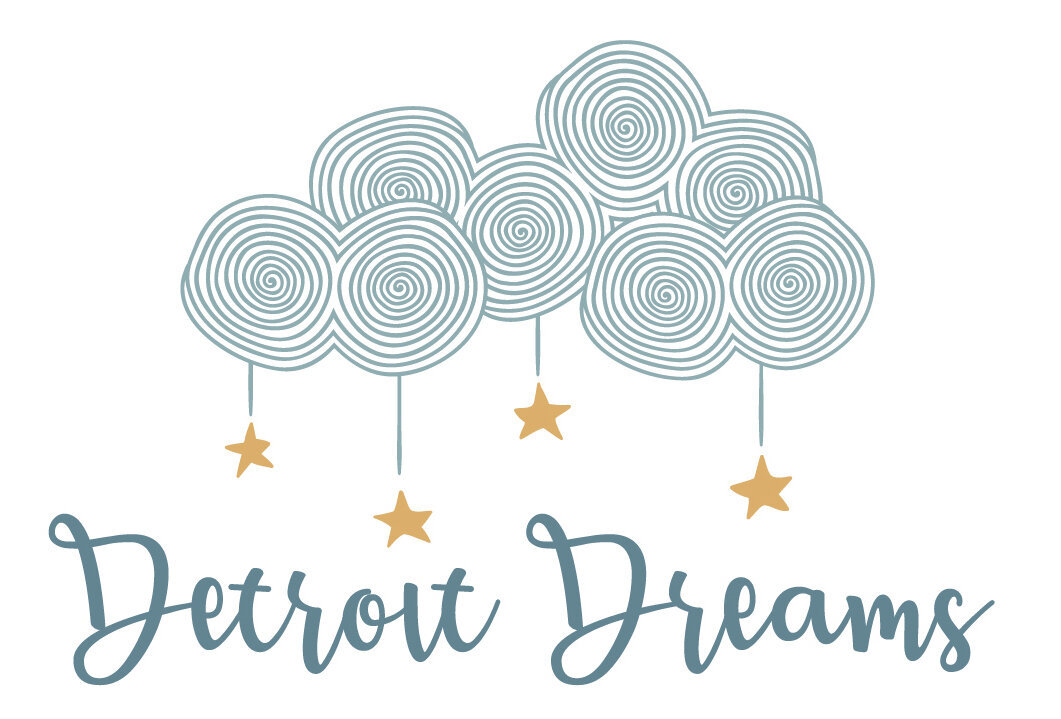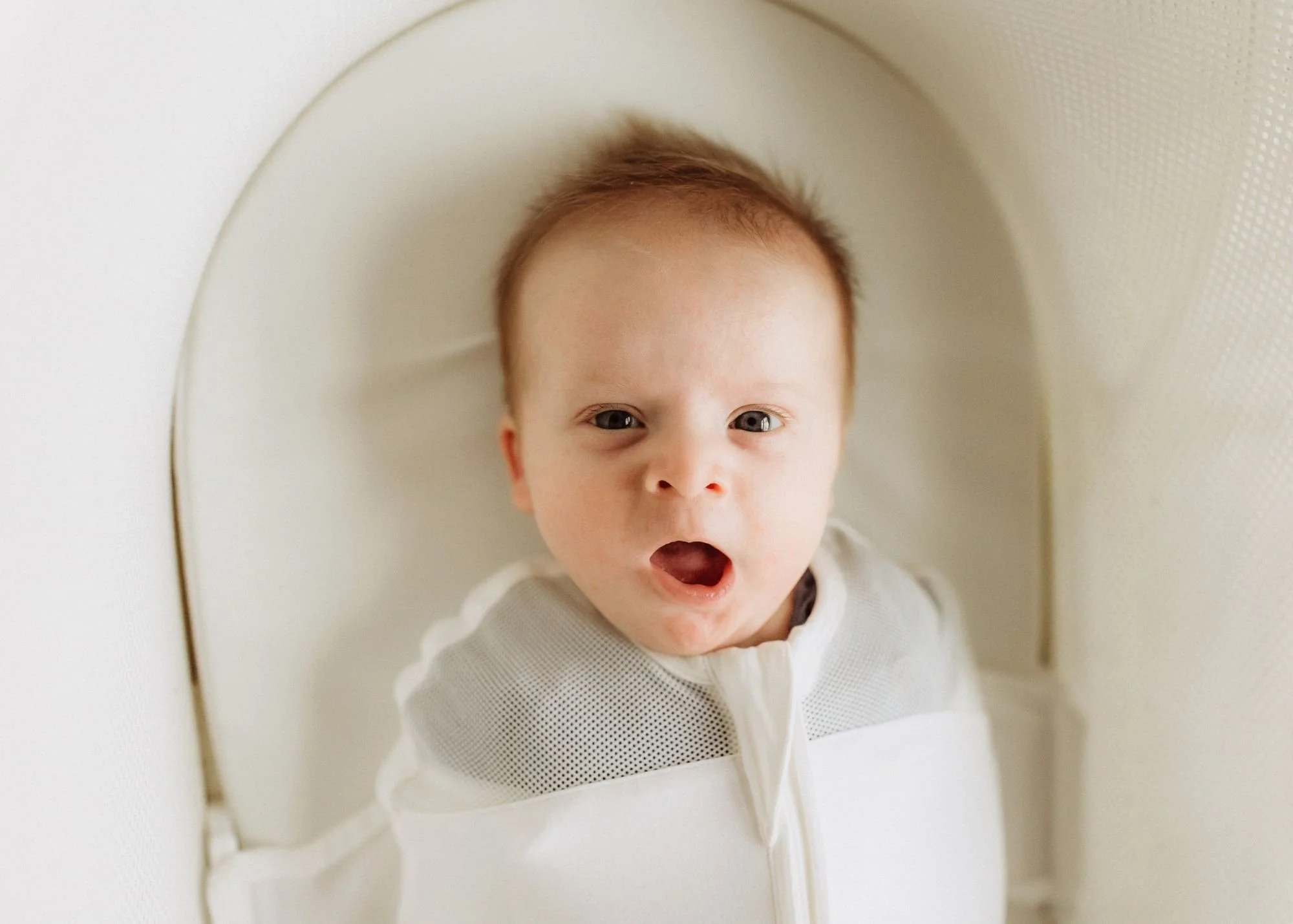The SNOO: The Good, the Bad, and the Ugly
/As new parents, sleep can often feel like an elusive dream. Between feedings, diaper changes, and the never-ending cycle of soothing your baby, rest can seem out of reach. That’s where many parents find The SNOO smart bassinet to be a lifesaver. This smart bassinet makes promises to help your baby sleep better by automatically responding to their cries with soothing motion and sound. While it may sound like the perfect solution for exhausted parents, the truth is more nuanced. Let’s break down the good, the bad, and the ugly when it comes to using the SNOO, and why it's important not to rely on it as your only solution for sleep.
The Good
Improved Sleep for Parents The biggest draw of the SNOO is its promise to improve the quality of sleep for both parents and babies. The bassinet which has a built in swaddle, gently rocks your baby and plays white noise or soothing sounds, which can help your little one fall asleep faster and stay asleep longer. For parents, this means less time spent rocking, patting, or trying to soothe their baby to sleep or back to sleep during the night. The more sleep you get, the better your ability to care for your baby during the day—this is especially crucial in those early months when you’re running on little sleep.
Safe Sleep Environment The SNOO is designed with safety in mind. It uses a secure swaddle system that prevents babies from rolling over, which can significantly reduce the risk of suffocation. This feature aligns with the American Academy of Pediatrics (AAP) guidelines, which recommend placing babies on their backs to sleep and avoiding loose bedding. The secure swaddling helps ensure that babies stay comfortable and safe while they sleep, giving parents peace of mind.
Helps Newborns Learn to Sleep Newborns often have trouble settling down on their own. The SNOO provides a comforting, familiar environment that mimics the sensations of the womb—gentle rocking and white noise. This can be especially beneficial in the first few weeks when babies are still adjusting to life outside the womb. The SNOO offers a consistent, soothing environment that helps babies fall asleep.
The Bad
While the SNOO can offer great relief for sleep-deprived parents, it’s not without its drawbacks, especially when it comes to transitioning away from it.
The Weaning Process One of the most common challenges parents face when using the SNOO is the difficulty in transitioning their baby to a regular crib. Babies who become accustomed to the SNOO’s constant rocking may struggle when placed in a stationary crib. This transition can be jarring, and without the gentle rocking motion to lull them to sleep, some babies may have difficulty settling themselves down.
Gradually weaning your baby off the SNOO by shifting to weaning mode, lowering the rocking speed, and eventually stopping the motion altogether can help ease the transition. However, if this is done too abruptly or without a consistent sleep routine in place, it may lead to more sleepless nights as your baby adjusts.
Over-reliance on Motion One major concern with the SNOO is that it can create a dependency on motion for sleep. While the rocking can be incredibly soothing for babies, it’s important to remember that, over time, babies need to learn how to self-soothe and fall asleep independently. Babies who are used to the constant motion may struggle to sleep without it. Additionally, babies who rely on the SNOO’s motion may not develop the necessary skills to transition smoothly between sleep cycles, as they’ve never had to do it without external help.
The Ugly
Long-Term Effects of Restricted Movement While swaddling in the SNOO is designed to be safe and comfortable, long-term use of the swaddle can actually hinder your baby’s ability to adjust to their Moro reflex (the startle reflex). In the early weeks, swaddling helps babies feel secure, but if used for too long, it can make it harder for them to adapt when they naturally begin to move more as they grow. When transitioning away from the SNOO, babies may have a harder time adjusting because they have become accustomed to being restricted, which can make the Moro reflex being more dramatic and startling as they are no longer swaddled.
The ability to move freely and explore their body is important for your baby’s development. Over time, babies need to start learning to adjust to their own sleep cycles and manage minor disruptions on their own, without the need for constant soothing motion.
Over-Responsive to Baby's Crying Another concern is the SNOO’s response time. While the bassinet’s quick response to crying might seem like a helpful feature, in our opinion, it may actually be too fast. When babies stir or cry during sleep, they are often transitioning between sleep cycles—a completely normal part of the sleep process. However, the SNOO immediately starts rocking in response to even slight sounds, which doesn’t give your baby a chance to settle themselves back to sleep on their own. Many babies, given just a few moments, may settle and return to sleep without help. But the SNOO’s quick response might inadvertently prevent your baby from learning how to transition smoothly on their own.
A bit of fussing during these transitions is completely normal, and babies can often work through it on their own if given the opportunity. While it’s natural to want to minimize fussing, it’s important to remember that some level during these sleep transitions is normal and doesn’t necessarily require intervention. You’d be surprised at what your baby might accomplish if you just pause and let him or her be for a few moments before jumping in to help them.
Please Set Your Alarm for Feedings! A key con to using the SNOO is that it can artificially soothe your baby back to sleep when they actually need to wake up for a feeding. While the motion may settle your baby back down, it can prevent them from waking for necessary feeds, especially during the newborn phase or when you’re still establishing your milk supply. It’s important to set your alarm to wake up for feedings if you have a newborn, as this ensures your baby is getting enough nutrition and allows you to maintain your breastfeeding or bottle-feeding schedule. The SNOO’s automatic soothing might encourage longer stretches of sleep, but it’s still essential for you to be in control of when and how often your baby eats
Tips for Using the SNOO as a Tool, Not a Crutch
Start with Weaning Mode from the Beginning (or at Least by 6 Weeks) One way to avoid the dependency on motion is to start using the SNOO in weaning mode right from the beginning or, at the very least, by 6 weeks. Weaning mode means that the bassinet is not in motion all night long, but instead starts to move as a response to to baby’s cry. Weaning mode helps your baby adjust to sleeping without relying on the constant motion. By starting early, you’ll set the foundation for better sleep habits and smoother transitions later on. If the constant motion is needed in those early weeks, don’t stress - just aim to move to weaning mode around 6 weeks.
Aim to Wean Off Motion Completely by 12 Weeks If possible, aim to wean your baby off all motion completely by 12 weeks. By this time, many babies are developmentally ready to begin adjusting to stationary sleep environments. Aiming for this timeline helps prevent prolonged reliance on the SNOO’s rocking motion, encouraging your baby to self-settle and fall asleep independently. Gradually reduce the motion over time, and avoid leaving it on full rocking mode for extended periods. This will allow your baby to start transitioning into a crib with fewer challenges and a smoother sleep routine.
Shift Away From the Swaddle To avoid over suppression of the Moro Reflex and to help your body adjust to their growing bodily movements, you can use the SNOO without the swaddle. Essentially the SNOO is just like any other bassinet at this point as you wouldn’t want to use the motion without the swaddle. But it can be a helpful part of the process to stop the motion, then stop the swaddle, then transition to a crib. You’ll also want to stop using the swaddle once baby begins to roll. To learn more about when and how to transition out of a bassinet, see here: WHEN TO TRANSITION YOUR BABY OUT OF THE BASSINET
Incorporate Other Sleep Techniques While the SNOO can help in the early months, it’s important to incorporate other sleep training techniques, such as establishing a consistent bedtime routine and practicing crib side sleep support like shushing or patting. These practices will help your baby start to learn how to sleep without as much help.
Consult with a Sleep Coach If you find that your baby has become too reliant on the SNOO, or if you're struggling with the transition, consider reaching out to a sleep coach. We can offer personalized advice and support to help you and your baby establish healthy sleep habits and navigate the transition from the SNOO to a crib. We can guide you through the weaning process and help ensure that your baby’s sleep training is on the right track for long-term success.
Consider a Postpartum Doula or Newborn Care Specialist for Overnight Support
If you're struggling with getting quality sleep during the night, consider hiring a postpartum doula or newborn care specialist to assist with overnight care. These trained professionals provide evidence-based sleep support and can teach your baby independent sleep skills without relying on devices like the SNOO. By offering personalized care and attention, a postpartum doula or newborn care specialist can help you establish a sustainable sleep routine and ensure your baby develops healthy sleep habits early on. They’re also invaluable for helping with overnight feedings, soothing, and supporting your family through this challenging phase, ultimately leading to better rest for many parents and babies.
The SNOO can be a helpful tool for parents, especially in the early days of adjusting to life with a newborn. However, like any sleep aid, it’s important to use it wisely and avoid becoming overly reliant on it. Gradually weaning your baby off the motion, incorporating sleep training techniques, and seeking support from an overnight postpartum doula or sleep coach can help ensure that your baby develops healthy sleep habits and is able to sleep independently in the long run.



